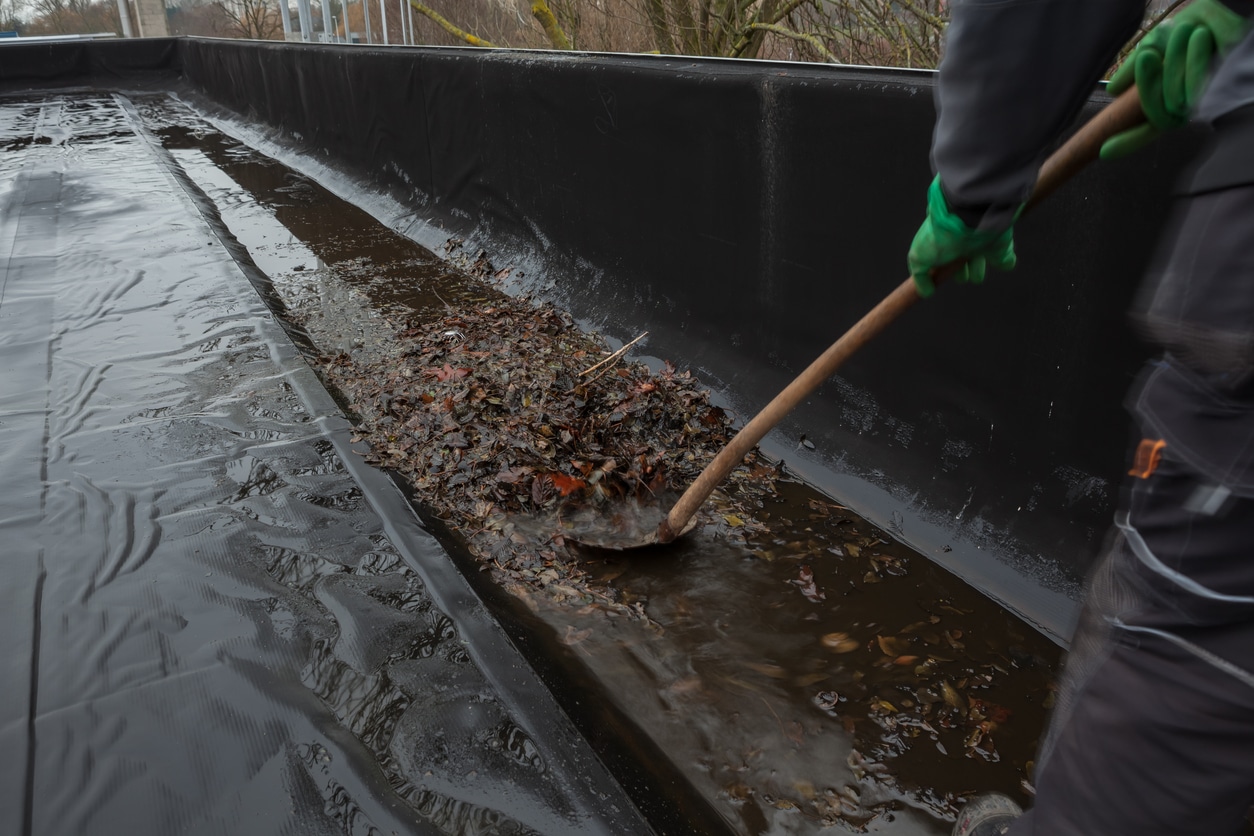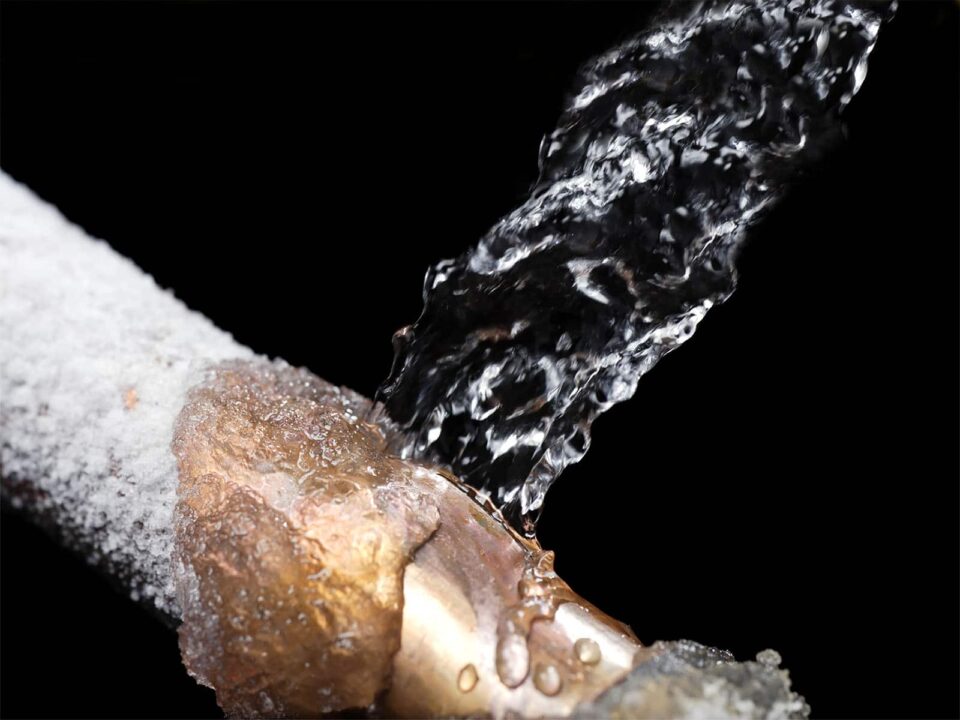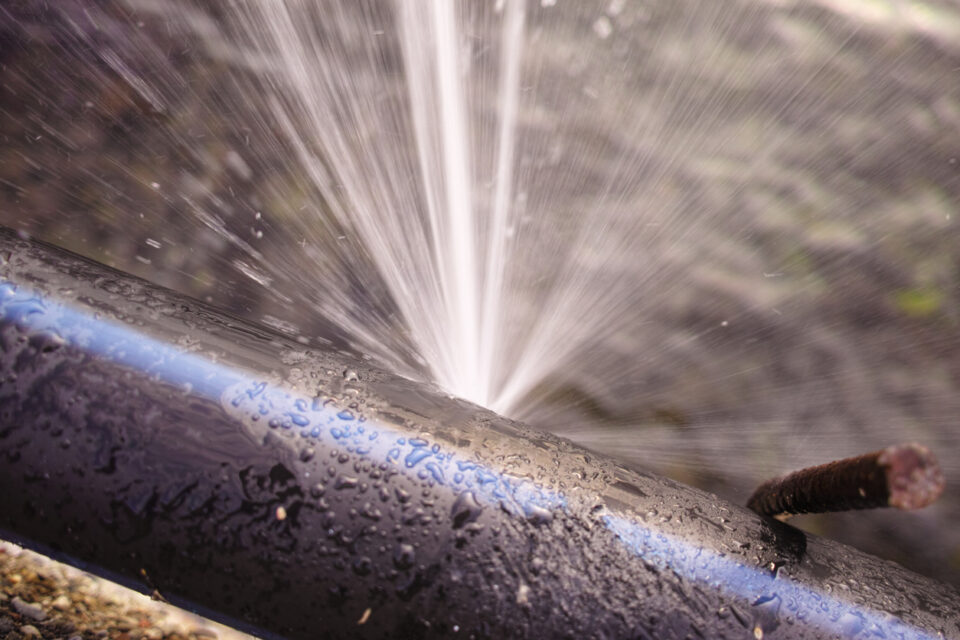Having a roof over your head is considered one of the necessities in life and for good reason. This is the fundamental building block that rests upon your most valuable property, your home. That is why it is so important that you know a few essential bits of information about your roof drain. Why not learn how to prevent drain clogs and floods from becoming a serious issue in your life. Below are some useful tips for taking care of your home’s roof drain.
What is the Difference Between a Flat Roof and a Pitched Roof?
The name “flat roof” gives people the impression that this type of roof is perfectly flat all the way across. Understandably, they might think that, but it is not exactly accurate. In reality, even a flat roof has a slight angle to prevent water from collecting on top of the roof. If it were completely flat, water would amass on the roof every time it rained until the roof caved in on itself. That is not ideal!
A pitched roof has an even sharper slope than a flat roof. This is useful at being even more effective at eliminating water from the top of the roof as a result. Another advantage that pitched roof structures have compared to flat roofs is that they are more resistant to water leaks. This is a big reason why you are more likely to see pitched roofs in areas that typically receive a lot of rainfall.
What is a Roof Drain Leader Line, and How Many are Generally Located on a Roof?
A roof drain does a really simple but highly useful purpose:
- Receives water that is collecting on the surface of the roof
- Deposits that water via a spout, conductor, or leader into a main drain or receptacle, such as dry well
As straightforward as that is, the process is extremely important. If a roof does not have the proper draining mechanisms necessary to help it process the excess water from the roof, then it is very likely that it will simply be unable to clear the roof the way it needs to be cleared. An important part of that process is proper pitch and the proper size and number of roof drains.
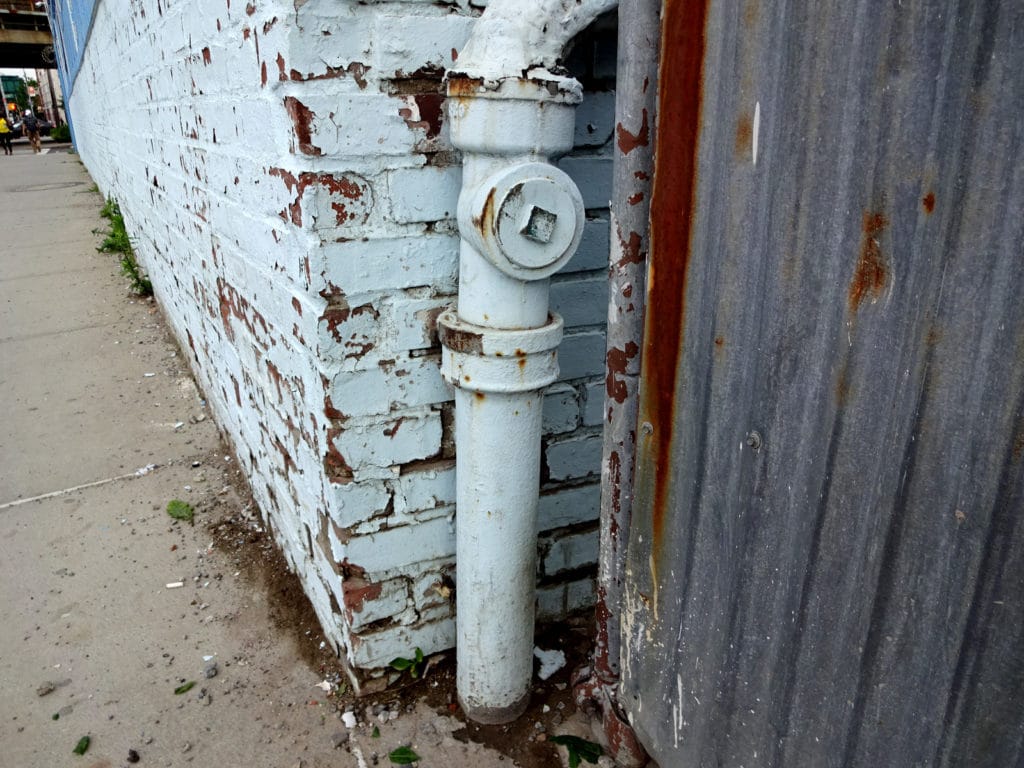
When it comes to the number of roof drains appropriate for a given roof, you will need to do a mathematical calculation. The calculation is based on:
- The amount of expected rainfall in inches per hour in a typical storm. in NYC that amount is based upon 3″ per hour.
- The square footage of the roof.
- The size of each drain pipe and the number of required roof drains is determined by the two above factors.
The heavier the rain or the size of the roof, the larger the leader or conductor pipe. Additionally, the larger the roof, the more drains you can expect to need to process that rainfall. As an example, if you have a 4-inch drain pipe with approximately 1.5 inches of water expected per hour, and 50,000 square feet of roof, then your calculation would look like this:
50,000/12,700 (the amount that a single 4-inch pipe can handle in these conditions) = 3.93 drains.
In this case, you would round that up and expect to see four drains on that house.
A Roof Drain vs. Leaders and Gutters
When designing your home, you will need to decide if you are going to use a roof drain or leaders and gutters. The choice often comes down to where your property lies. The difference is that a roof drain is installed going physically through the roof.
Chartattack.com explains that a drain solution is preferred if your home happens to rest on a slope or is near a body of water:
While gutters are useful for handling water from rain or snow, if your property is on a slope or has nearby running water, you will need an underground solution to help keep your home dry.
However, it is also said that leaders and gutters are the better solutions for those whose primary concern is dealing with typical rainfall from a storm.
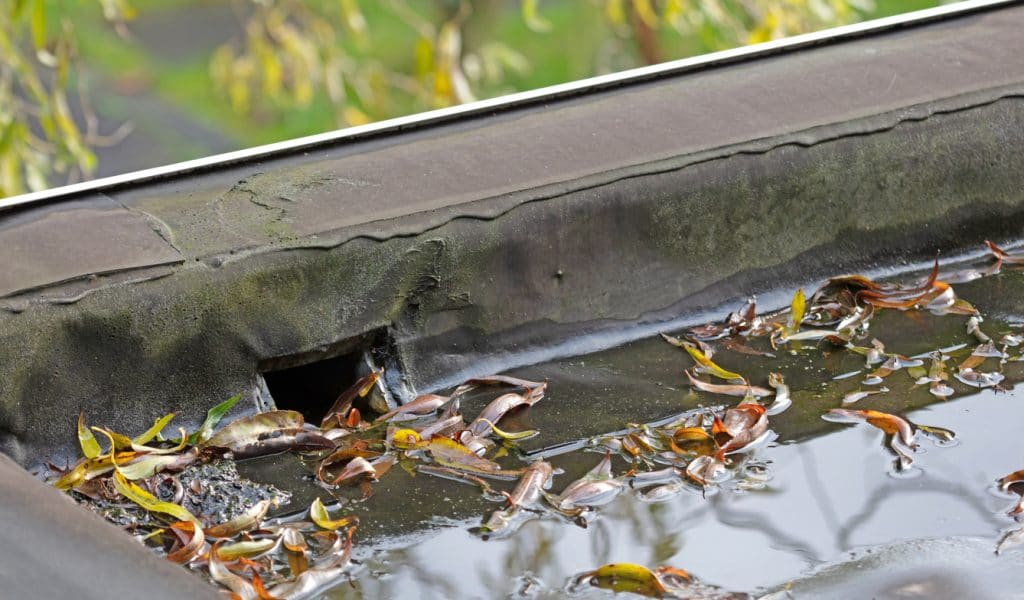
How Roof Strainers Can Prevent Clogs
There are many different types of roof strainers available on the market, for a good reason. They are an incredibly useful tool when it comes to preventing clogs and other issues from overtaking your drainage system.
What an effective strainer will do is make it easier for you to allow water to flow through the system as it needs to. However, debris won’t be able to make its way through because the strainer system will keep it from getting into the drains.
Depending on the area where you live, various types of debris may cause an issue on your roof. This includes:
- Sticks
- Leaves
- Insects
- Trash
None of those things belong on your roof, and they certainly don’t belong in your drainage system. A well-designed roof strainer can keep all of those things out of the system. It is also good practice to inspect and clean debris off of your roof at least twice a year. Of course, if trees are located above your roof, leaves can accumulate even more frequently.
What is a Scupper, and How is it an Effective Backup Roof Drain?
Copper.org provides us with the most direct definition of what a scupper is:
Scuppers are used to provide an outlet through parapet walls, or gravel stops on flat and built-up roofs to allow drainage of excess water. They can be used in conjunction with gutters and downspouts to divert the flow to the desired location.
Typically, scuppers are found in areas that experience heavy rainfall frequently. They are more common in commercial buildings than in residential ones. Larger roofs, such as those on commercial buildings, may need a little extra backup drainage support. This is where scuppers are extremely useful.
How Often Should You Clean or Check a Roof Drain?
There is not a set number of times that you should check your roof drain. However, there are some general rules that most people adhere to to get the most from their drains. For example, it is always advisable to check on your drains after a particularly harsh storm or extreme weather event of any kind.
Outside of that, the recommendation is to check up on them every month or two. It is important to check your roof at two particular points, before a large ice or snow melt, and during the Fall when leaves can accumulate.
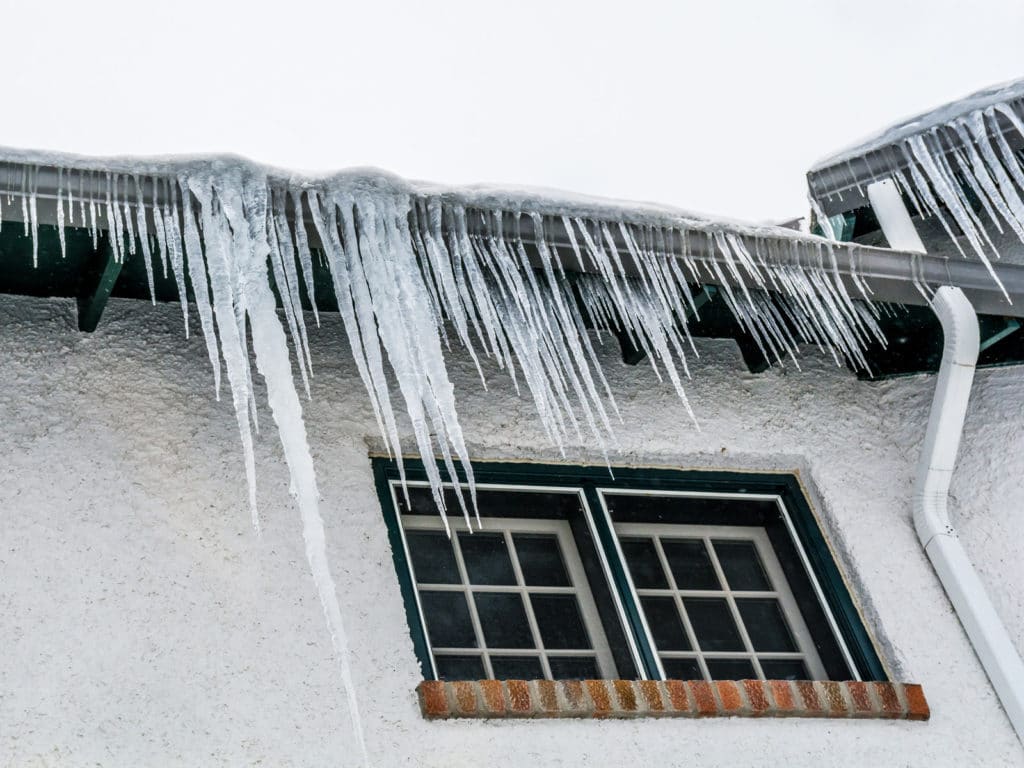
You may notice on your first couple of checks that the drains are relatively clear of debris (good!). You may not need to do much other than verify that you checked on them. However, most people will want to clean out their drains at least a few times a year, and sometimes more.
Much of the cleaning frequency requirements come down to where you live and what kind of debris your roof has to put up with. You may even decide to hire an expert drain cleaner to do the job for you to both save time and ensure that it is all done properly.
Add Roof Drain Strainers and Gutter Guards to Prevent Clogged Roof Drains
If you take nothing else away from what we say today, you should at least walk away knowing that your roof needs properly maintained to get the most life out of it. Installing roof drain strainers and gutter guards is a great way to enhance the longevity of your roof and its drains.
Strainers and gutter guards keep the debris that you don’t want in your drains from ever making its way in. Your drains will only have to deal with the water that they originally needed to deal with. This may save thousands of dollars in repairs by getting this all done correctly.
If you would like more information about roof drain maintenance and why it is so vital to the structure of your roof, please the Balkan Plumbing and Drain Team and let us know if you are seeking more details. We are happy to help!

